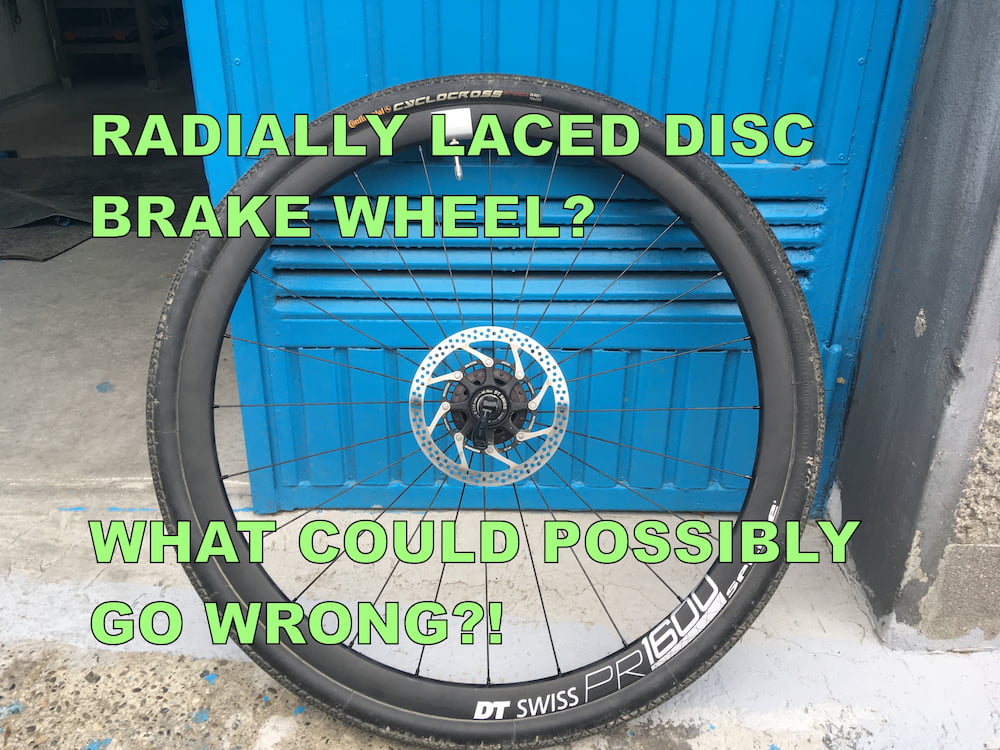I got an interesting comment on my YouTube video that is worth answering via an article (to cover all the nuances). I’ll post the comment as it was written (with my translation from Serbocroatian), and this whole article is my reply.
0. The comment about the wheelbuilding prices and process
[Username redacted for privacy]
• 2025-06-26@BikeGremlinRS
No joke, I watched you true that Krypton rim… that takes time, man.
I wouldn’t do that for less than $50.
And a new one costs $30 – I bought one the other day, swapped it, and threw out the old one because it was slightly wobbling, annoyed me, and rubbed against the brake.
I couldn’t get it to brake properly.
You must really love your job – or be extremely expensive.
1. Wheel lacing (time-saving tips)
By wheel lacing I mean lacing the spokes, of course – but also applying oil or anti-seize paste to the spoke threads and the rim holes (where the nipples sit).
There’s a jig that can hold the hub and rim in position to make the lacing process a lot faster and easier. Here’s a DIY example (many thanks to the creator, Aljaž Trenta – though I personally use Roger Musson’s spoke length calculator, not his):
🔗 https://spokecalc.io/wheelbuilding-stand.php
That jig also requires storage space, so I don’t use one – I repair bikes as a hobby, and due to the low price of factory-built wheels, people rarely choose custom builds (classical and neoclassical economics can explain this logic, though I think Marx’s analysis was the most on-spot, regardless of what one thinks about communism 🙂 ).
2. Initial nipple threading
Initial threading means screwing in all the nipples to the same depth – which is done using a special tool with a centre pin that separates from the nipple once the correct depth is reached.
Some people use a power screwdriver for this, but I avoid it. It doesn’t save that much time in my experience and increases the risk of missing a sign that something isn’t going smoothly (colour me conservative).
3. Wheel truing
Wheel truing means getting the rim exactly centred between the dropouts (i.e. the hub ends, unless the frame is offset), without lateral or radial wobble.
This process takes as long as it takes. With higher-quality rims, spokes, and nipples, it goes quite fast:
If I thread all the nipples evenly, there’s often no need for additional lateral or radial correction, or tension balancing. It’s just a matter of turning the nipples further by half, then quarter turns, until the optimal tension is reached.
Krypton rims have a lot of imperfections, so it usually takes a lot more time to compensate for those (if you want to build a high-quality, long-lasting wheel). On the other hand, they cost about $15 each, while DT Swiss 535 rims cost $30–40 and are only available in Germany – so even more expensive in practice due to shipping and customs (to Serbia).
Good spokes and nipples cost about $1 per piece, and also usually have to be sourced from Germany.
Here’s my spoke storage 🙂 – and the process I used to make it:
📺 https://www.youtube.com/watch?v=BwlOMyLrxKQ
4. How much should wheelbuilding cost?
If a wheel just needs to look straight, without much concern for spoke tension uniformity, it can be done faster – especially when it’s just a basic true (like when someone brings a wheel with a mild lateral or radial wobble).
But if you want a wheel built properly, I don’t think lacing should cost less than $10, and truing a properly laced wheel (as described above) around $20 (for Serbian prices and costs of living). To sum it up:
- A decent Shimano hub costs around $30.
- A mid-range rim is around $40 (if sourced without high shipping/customs fees).
- Good spokes and nipples are about $1 each, so $36 for 36 spokes.
- Lacing is around $10.
- Truing around $20.
A table overview and a total for one good-quality wheel:
| Part | Cost ($) | Total ($) |
|---|---|---|
| Rim | 40 | 40 |
| Spokes + Nipples | 36 | 76 |
| Hub | 30 | 106 |
| Lacing | 10 | 116 |
| Truing | 20 | 136 |
Factory-built wheels available in Serbia for about $30, often using Quando hubs and Krypton rims, are fine for light use (anything short of aggressive off-road riding or heavy loads – like touring, or heavier riders, or carrying a child).
I’ve also seen ready-made wheels (BikeTeam in Novi Sad sometimes sells them) with low-end Shimano hubs for under $50.
That’s also a solid option for many use cases.
5. Final note and is it worth it?
Even a well-built wheel with good spokes is not immune to mechanical damage and theft.
Even the best built wheel can be damaged if the chain drops into the spokes (usually due to poorly adjusted derailleurs and limit screws), or from impacts like hitting rocks.
Also – good wheels aren’t theft-proof. Even if they are not built for style (to be eye catching and attract thieves), they still hold a lot of value and are a great(er) loss when stolen.
To make matters worse, in Novi Sad (where I live & work), there are very few proper bike racks that let you lock both wheels.
Here’s an example of a good one that does allow for proper bicycle locking:
📺 https://www.youtube.com/watch?v=WMuP1gr2ZI0
Last updated:
Originally published:

